Contact us
Crushing
Crushing is the first stage of fragmentation. This task is carried out in two or three stages (primary, secondary and tertiary crushing), predominantly in dry sorting.
Industrial crushers reduce the materials from very large pieces or blocks of up to around 10mm. They operate on different principles according to the characteristics of the material (mechanical resistance, abrasiveness, moisture content): by compression/crushing (jaw, gyratory, conical or roll crushers) or by shock/percussion (impact or hammer crusher).
| Type | Materials | Particle size In (d100) | Particle Size Out (d50) | Capacity max | |
|---|---|---|---|---|---|
| Hammer |
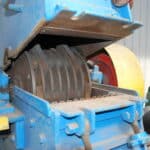
|
Low abrasion materials | 0 - 125 mm | Grilles de 80 mm à 4 mm | 1 t/h |
| Jaw |
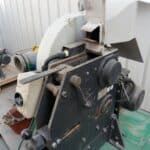
|
Hard and abrasive materials | 0 - 200 mm | 0 - 30 mm | 1 t/h |
| 0 - 80 mm | 0 - 10 mm | 100-200 kh/h | |||
| 0 - 50 mm | 0 - 2 mm | 100 kg/h | |||
| Toothred roll crusher |
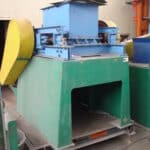
|
Low abrasion materials | 0 - 100 mm | 0 - 15 mm | 2 à 3 t/h |
| Diamond tipped roll crusher |
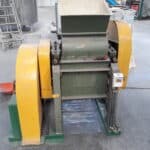
|
Low abrasion materials | 0 - 100 mm | 0 - 10 mm | 1 t/h |
| Double-roll crusher |
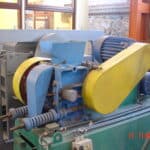
|
Low abrasion materials | 0 - 20 mm | 0 - 5 mm | 100 kg/h |
| Fluted roll crusher |
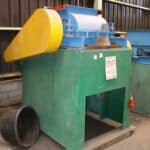
|
Low abrasion materials | 0 - 25 mm | 0 - 5 mm | 2 à 3 t/h |
| Percussion |
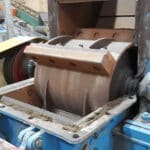
|
Low abrasion materials | 0 - 250 mm | 0 - 5 mm | 1 à 2 t/h |
| Conical |
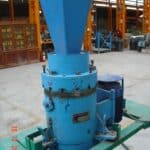
|
Low abrasion materials | 0 - 15 mm | 0 - 2 mm | 500 kg/h |
All
Our expertises